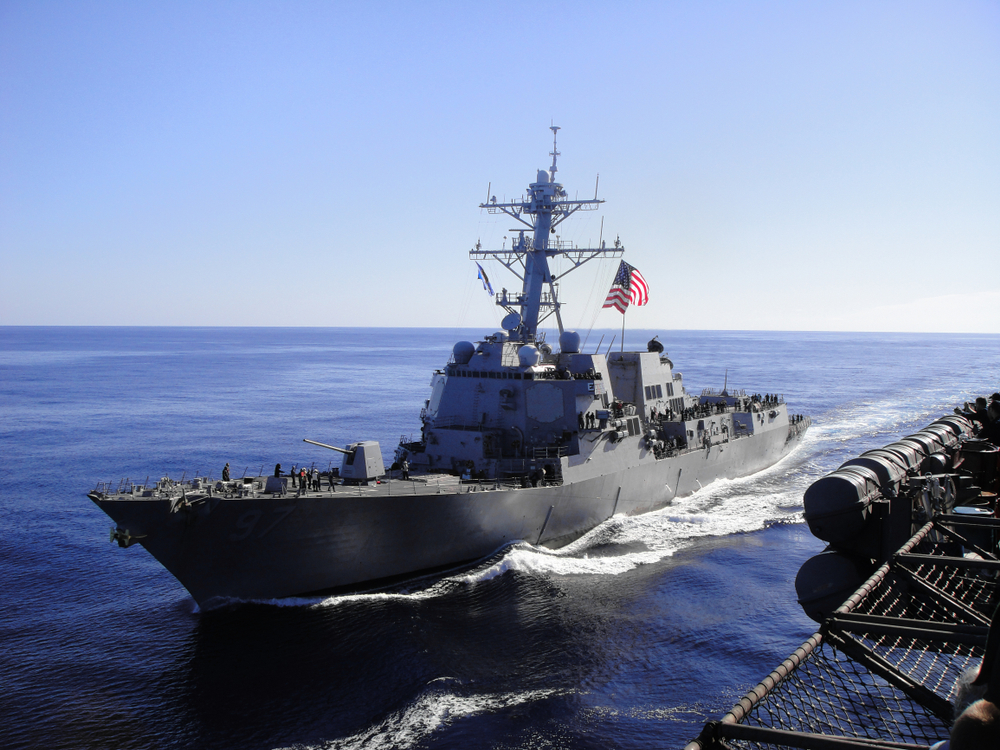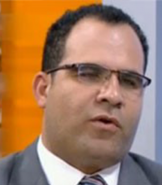The US Central Command for Naval Operations in the Middle East has announced the creation of a new Multinational Task Force (CTF 153) to promote stability and security in the Red Sea region, through combatting illegal activities such as drugs and weapons smuggling. The task force started operations officially on the 17th of April 2022, as per the declaration of Admiral Brad Cooper the head of the 5th Fleet in Bahrain. CTF-153 will operate at the southern entrance of the Red Sea at Bab El Mandeb and the Gulf of Aden and will comprisebetween 2 – and 8 naval units. Naval command also declared that CTF-153 will have its own regional command at a later stage.
Admiral Cooper did not specify in detail the actors this task force is mandated to confront, or the exact nature of its operations. However, this is not unusual when new operations are launched on the world stage, as was the case, for example, with Operation “Iriny” in the eastern Mediterranean, launched to prevent weapons from reaching Libya. In view of the ongoing issues in the Red Sea region, the launching of this new task force has several important implications, including:
Emerging regional security arrangements: The situation inthe Middle East has forced the periodic establishment of new security arrangements. The US established CENTCOM in the1980s, in response to a changing security landscape, to serve as a cornerstone of regional security, focused on the maritime theater of the Gulf, and aimed at confronting the threats arising from various wars that erupted in this region. The extension of the mandate of CENTCOM from the Gulf to the Red Sea is in keeping with the expansion of threats arising from the war in Yemen, which impacted regional security as a whole. It can be deduced that the creation of this task force came after extensive negotiations with US allies in the region given the current concerns, taking into consideration that this is the fourth expansion of operations in the Gulf and surrounding areas. This is not a first and there have been previous occasions where similar operations have taken place with the deployment of special forces in the Gulf region and its surrounding area.
Prioritizing maritime security: Although Admiral Cooper did not specify a focus on Iran and the Houthis, most smuggling operations occur on the coast of Yemen, in an operational theater extending from the southern entrance of the Red Sea down to the horn of Africa and in the Arabian sea. Initially, smuggling operations aimed at strengthening themilitary capabilities of the Houthis in Yemen, specifically with drones and rockets. However, recent reports from UN Experts and organizations tracking cross border crime have indicated that Yemen has now become a transit point for the smuggling of Iranian weapons into the horn of Africa. These weapons are no longer just supporting rebel groups in Somalia or other regional states but are now finding their way into the hands of terrorist groups such as Al Qaeda and ISIS.
Redeploying US Forces: There is an ongoing redeploymentof US forces in the region, as part of a general redeployment across the globe. The redeployment is linked to repositioning US forces for future operations as well as ongoing cooperation with US allies in the region. This developmentrepresents a turning point in US deployment, after itswithdrawal from both Iraq and Afghanistan. This new phase is related, according to some analysts, to the new US policy orientation to not engage in foreign military confrontations and bring US troops home. Other analysts argue that this isrelated to the integration of Israel into the regional security structure, in keeping with the new Abrahamic Peace process, The aim is to undermine the growing Iranian presence in the Red Sea, buttressed by the Houthis, which has created multiple threats that require direct presence in the operational theatre to contain.
Undermining Competitors: The US perceives extendedChinese and Russian maritime presence in this area as a threat to its interests. The US may be taking advantage of Russianpreoccupation with the Ukraine war to try to reduce Russian influence in this region, especially as Russia has been trying to establish a permanent maritime presence by securing for itself a naval base in Port Sudan, as well as other logistical points that would secure its access to the Indian Ocean, where it deploys a fleet. Many observers note that the Russian war in Ukraine has led the US to a renewed appreciation for the strategic importance of the Middle East, and how its disengagement from the region will encourage its competitors to move in. Hence, the presence of more US naval assets, naval activities, and closer coordination with allies, would allow the US to maintain hegemony over regional security arrangements, thereby reducing Russian and Chinese influence.
Command Structure
The operation to establish a new Task Force in the region will increase and upgrade US military assets in the region, as it will include between 2 – 8 strategic naval assets, including, most strikingly, the USS Mount Whitney which is a command-and-control ship which ran the US 6th fleet from Naples. The Mount Whitney was involved in the coordination between the US Sixth Fleet, NATO, and AFRICOM, and was replaced by new naval assets in Europe. Reports indicate that upgrades in the Middle East will also include unmanned offensive and defensive weapons systems. CENTCOM has lately established Unit 59, tasked with confronting irregularthreats from drones and suicide speedboats. Experiments have been conducted in the past two years on the use of Laserweapons to intercept such threats, on the USS Portland in the same region in which Unit 59 will be deployed. The most important development is the ability of this new unit to conduct multilateral coordination and exchange of information in order to confront regional threats.
There will be rotation of command of this group, as noted byAdmiral Cooper, which helps to distinguish between international and regional command, while maintaining coordination between them. US Command in Bahrain will remain the center of command for the new task force, which is a crucial point in light of different views in the region. Israel,for example, is seeking to assume leadership of regional efforts to confront Iran, while the US does not endorse this Israeli stance. The establishment of the new task force indicates that the US intends to play the the leading role when it comes to regional security arrangements, in order tomaintain momentum, coordination and control. Some regional players prefer Israel’s involvement in these securityarrangement to take place through the US and CENTCOM, allowing them to coordinate with the US, and not directly with Israel.
Future prospects
The success of this new view of regional security arrangements depends on the ability to fulfill its goals ofconfronting threats in the Red Sea, and maintaining the coordination between the regional and international levels. It can be argued that this new deployment in the Red Sea willplay in fact play a vital role in reducing smuggling operations of weapons and drugs, especially along the Yemeni coast. This new mission could also in the future take on the naval operations carried out by the Arab alliance, in the event thatthe UN-sponsored cease fire with the Houthis holds, andevolves into a security agreement that ends the military role of the alliance in Yemen, as well as developing multilateralsecurity arrangements. However, this vision will be confronted with several challenges , most notable that Iran and its allies are not likely to accept these new arrangements, and will target this new unit, unless a new approach to US-Iran relations develops, in the context of a settlement of the nuclear issue.


